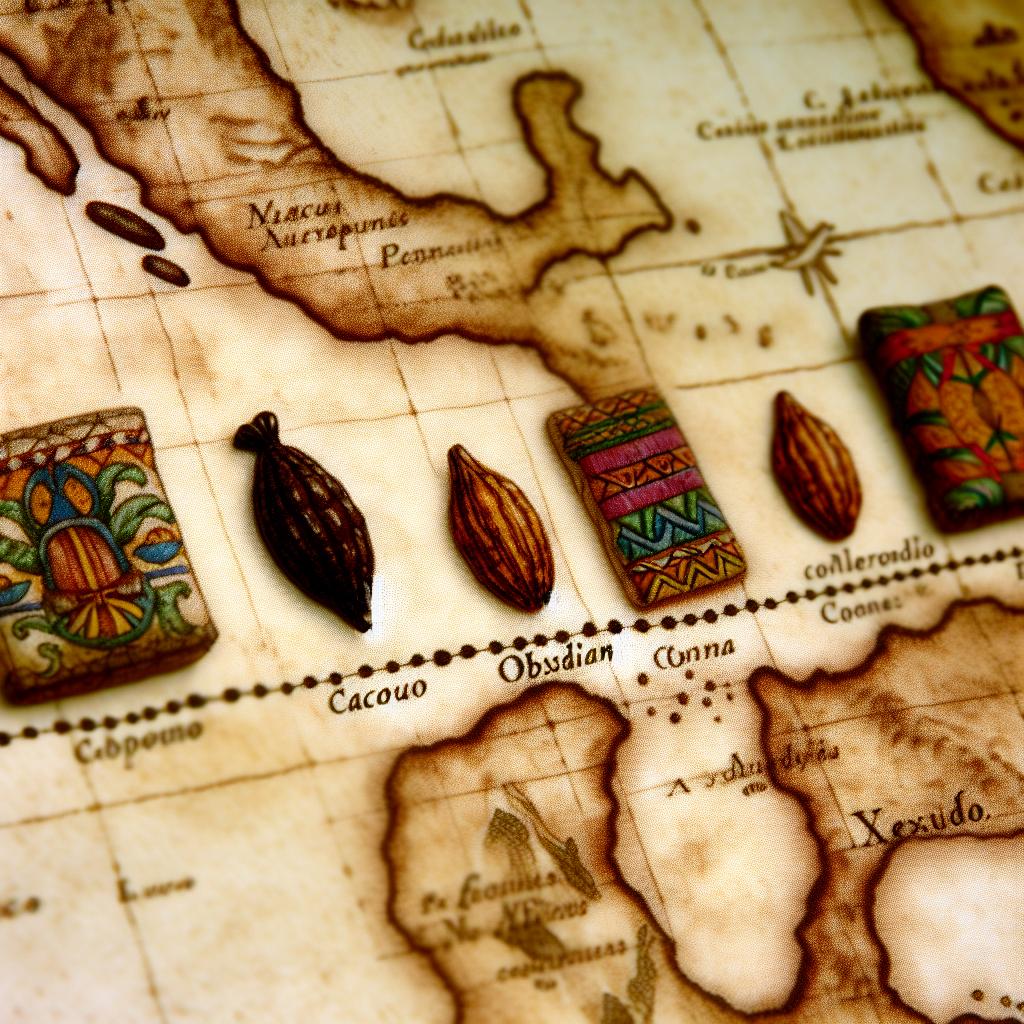Introduction to Ancient Trade Routes and Their Influence
The history of trade routes across the region now known as modern Mexico reveals a complex tapestry of cultural and economic exchanges interwoven long before European colonizers set foot on these lands. These ancient trading pathways, utilized by remarkable indigenous civilizations, laid the groundwork for the vibrant culture and strong economy present in modern Mexico. This exploration into the trade networks of antiquity provides insight into their far-reaching influence on both past and present societies.
The Mesoamerican Trade Network
Well before the onset of Spanish colonization, Mesoamerica was a hub of connectivity, maintained through an advanced trade network that supported economic and cultural links among various indigenous civilizations, including the Olmec, Maya, Toltec, and Aztec peoples. The intricate nature of these networks facilitated not only the exchange of material goods but also ideas and technological advances, solidifying communication across great distances.
Key Goods and Their Movement
In these trade networks, merchants transported a vast array of goods over wide-ranging distances, fueling economic and social vitality. One of the central commodities was cacao, which originated in Maya regions and became a significant item in the Aztec economy, often doubling as currency. Quetzal feathers, another item of considerable worth valued for both their aesthetic allure and symbolic meanings, were traded from areas like Chiapas to the central highlands. Such transactions underscored a network of mutual dependence and cultural exchange.
Moreover, goods like obsidian and precious stones were at the heart of these economic interactions, highlighting the diverse and rich resources managed by different groups. The movement of these goods across the network exemplified the interconnectedness of these civilizations, illustrating how trade routes contributed to a growing and dynamic Mesoamerican society.
The Role of Geography
The geographical landscape played a pivotal role in shaping these ancient trade routes, naturally directing the paths merchants traveled. Mountainous terrains, expansive coastlines, and fertile valleys dictated the movement and accessibility of certain regions. The Yucatán Peninsula, for instance, emerged as a critical maritime hub, facilitating trade and connection between Mesoamerican societies and neighboring cultures in the Caribbean and beyond.
Influence on Modern Mexico
The vestiges of these ancient trade routes have deeply impacted the socio-economic fabric of contemporary Mexico, influencing various facets of its modern identity.
Cultural Exchange and Syncretism
The integration and blending of indigenous cultures through trade channels laid the foundation for a form of cultural syncretism that remains a hallmark of Mexican identity today. The sharing and combination of traditions due to these ancient exchanges are evident in modern Mexican customs, particularly in culinary arts, which showcase a tapestry of diverse cultural influences originally spread through these ancient trading networks.
Economic Impact and Infrastructure
The economic tenets established through these trade networks have undergone evolution but continue to underpin the current Mexican economic structure. Modern-day highways and railways often follow the paths carved by these ancient routes, signifying the enduring value of indigenous logistical acumen. This alignment also reflects an optimization of transportation that leverages historical knowledge, facilitating efficient movement and commerce.
Continued Importance of Trade
Mexico’s current status as a vital trade center in the Americas is partially rooted in these foundational systems. Today’s global and industrial trade activities broaden the scale of commerce, yet Mexico’s significance as a cultural and economic conduit endures. These ancient trade routes have thus contributed to Mexico’s lasting role in bridging varied communities, both regionally and internationally.
Conclusion: A Legacy of Connection
In conclusion, ancient trade routes did more than foster economic and cultural exchanges in pre-Columbian times; they also played a crucial role in the rise and development of modern Mexico. Acknowledging these routes enhances our appreciation of the profound historical foundations upon which contemporary Mexican society is constructed. For those interested in further examining the impact of these age-old trade networks, numerous archaeological and historical studies offer extensive insights into these significant connections, revealing the lasting legacy of an ancient web of inter-civilizational links.







